According to Rephonic’s podcast database, Deadtime Stories launched 6 years ago and has published 25 episodes to date, becoming a go-to source for horror entertainment during idle moments. I remember discovering this concept during a particularly long doctor’s office wait – what started as mindless phone scrolling turned into an incredible journey through bite-sized narratives that made time fly.
You know those awkward in-between moments when you’re stuck waiting? They don’t have to be wasted anymore. Deadtime stories are specifically crafted narratives designed to fill those 2-15 minute gaps in your day with something actually worth your time.

Table of Contents
-
What Makes a Perfect Deadtime Story Worth Your Precious Minutes
-
Flash Fiction Masterpieces That Pack Maximum Punch
-
Classic Short Story Collections for Timeless Appeal
-
Contemporary Micro-Fiction for the Digital Age
-
Serialized Mini-Episodes That Keep You Coming Back
-
Interactive and Multimedia Stories for Active Engagement
-
Therapeutic and Mindful Narratives for Stress Relief
-
How Each Story Type Fits Your Specific Deadtime Needs
-
Transform Your Creative Inspiration with Nairrate
-
Final Thoughts
TL;DR
-
Deadtime stories should be 100-2,000 words, readable in 1-15 minutes (but honestly, aim shorter than you think you need)
-
The best ones hit you harder than you’d expect through simple characters and straightforward plots
-
25 top stories span 6 categories: flash fiction, classics, micro-fiction, serialized episodes, interactive multimedia, and stories that actually help you chill out
-
Match story types to your mood and situation – mysteries for staying alert, romance for mood boosts, sci-fi for creative inspiration
-
Think practically about digital vs. physical formats, audio vs. text, and whether you’ll have internet
-
Different waiting situations need different engagement levels and emotional impacts
-
Interactive options let you participate instead of just reading passively
-
Some stories are specifically designed to help you de-stress during hectic days
What Makes a Perfect Deadtime Story Worth Your Precious Minutes
Look, I’ve wasted way too many waiting moments picking the wrong story. You know that sinking feeling when you’re three paragraphs into something complex and your bus shows up? Yeah, let’s avoid that.
The perfect deadtime story needs to match your actual situation – not your wishful thinking about how much time you have. Word count should fit your real available time, engagement needs to be immediate (no slow builds allowed), and the emotional impact should hit harder than you’d expect from something so short.
I’ve learned through painful trial and error that the wrong story choice leaves you frustrated when real life interrupts at the worst possible moment.
Time Investment That Actually Fits Your Schedule
Here’s what I’ve figured out after years of getting this wrong: Your deadtime story should match your actual available minutes. Waiting for coffee? Stick to something under 500 words. Doctor’s office with that inevitable delay? You’ve got breathing room for 1,500-2,000 words.
Understanding the fundamentals of how to write a short short story can help you appreciate why these perfectly timed narratives work so well.
The sweet spot ranges from 100-2,000 words (about 1-15 minutes of reading), but honestly? I always underestimate how long things take, so I usually aim shorter than I think I need.
|
Time You Actually Have |
Word Count That Works |
Story Types |
Perfect For |
|---|---|---|---|
|
1-3 minutes |
100-300 words |
Six-word memoirs, Twitter stories |
Bus stops, coffee lines, elevator rides |
|
3-7 minutes |
300-800 words |
Flash fiction, quick episodes |
Coffee breaks, short waits |
|
7-15 minutes |
800-2,000 words |
Classic shorts, longer pieces |
Lunch breaks, extended waits |
Immediate Engagement Without the Learning Curve
Deadtime stories can’t mess around with slow builds. You need to be hooked from sentence one because your brain’s already juggling a million things. Look for stories with killer opening lines, minimal characters (1-3 max), single settings, and plots that get moving immediately.
Here’s my favorite example of instant engagement: “The last person on Earth sat alone in a room. There was a knock at the door.” In just 18 words, you’ve got setting, character, conflict, and immediate intrigue. No backstory needed, no complex world-building – just instant “holy crap, what happens next?”
Your brain’s already switching between tasks during deadtime. The last thing you need is a story that requires extensive mental mapping or Wikipedia research to understand what’s happening.
Emotional Impact That Hits Harder Than Expected
The most powerful deadtime stories punch way above their weight class. I’ve read 300-word pieces that haunted me for weeks, while some full novels barely register after finishing. It’s weird how that works, but when a writer nails it in a short format, it can be more devastating than something 100 times longer.
Some provide quick entertainment and distraction, others offer moments worth thinking about later, many deliver genuine emotional experiences in compressed timeframes, and the best create memories that stick with you for days.
Genre Matching for Your Current Mood
This took me forever to figure out, but your morning commute needs different stories than your evening wind-down routine. Mystery and thriller stories keep you alert and engaged (great for mornings when you need to stay sharp). Romance provides emotionally satisfying experiences that can genuinely improve your mood. Science fiction offers brain stimulation that’s perfect for sparking creative thinking. Literary fiction gives you something meaningful to chew on during quiet moments.
Accessibility Stuff You Actually Need to Think About
Be realistic about how you’ll actually consume these stories. Digital formats are convenient but your phone might die or lose signal. Physical books work everywhere but good luck carrying them around all day.
Audio options are fantastic for hands-free consumption but you need headphones in public. And if you’re going underground or traveling, make sure you can actually access your stories offline – learned that one the hard way during a subway delay.
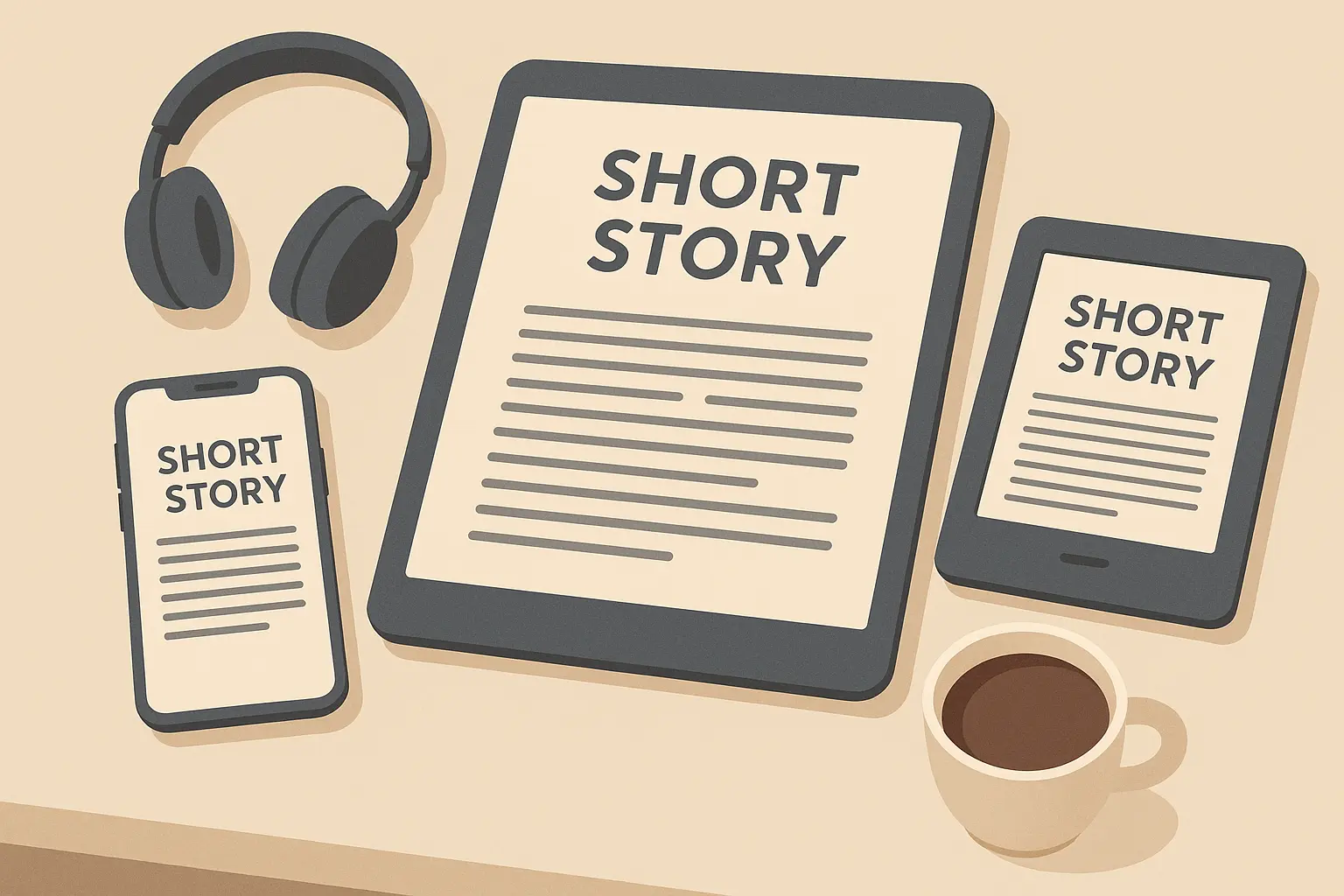
Flash Fiction Masterpieces That Pack Maximum Punch
Flash fiction is where writers show off. These are 5-10 minute stories that somehow contain entire emotional universes. The good ones use every single word like it’s precious (because it is), employing techniques like implication over explanation, twist endings that make you rethink everything, experimental structures where the format becomes part of the story, single-moment expansions that freeze time, and circular narratives where the ending transforms the beginning.
Deadtime stories in this category prove that short doesn’t mean shallow. I’ve been haunted by 300-word pieces while forgetting entire novels. The magic happens when writers trust you to be smart enough to fill in the gaps.
1. “For Sale: Baby Shoes, Never Worn” Style Ultra-Compressed Stories
These six-word stories are basically magic tricks. Hemingway’s famous example suggests expectant parents, loss, grief – all without stating any of it directly. Your brain fills in the gaps, making you part of the storytelling process.
Modern variations might include “Wedding dress, size 8, worn once, by mistake” or “Love letters, returned unopened, forwarding address unknown.” They work because they trust you to connect the dots and create the missing story elements in your own mind.
2. Twist Ending Flash Fiction That Changes Everything
These 300-500 word stories are like literary magic tricks. They establish clear expectations, then completely flip your understanding in the final lines. You might follow someone preparing for what seems like a job interview, only to discover in the last sentence they’re actually preparing for their own execution.
The magic lies in forcing you to reread everything with new eyes. That innocent detail from paragraph two suddenly becomes sinister. The character’s nervousness takes on entirely new meaning. You get two stories for the price of one – the surface narrative and the hidden truth underneath.
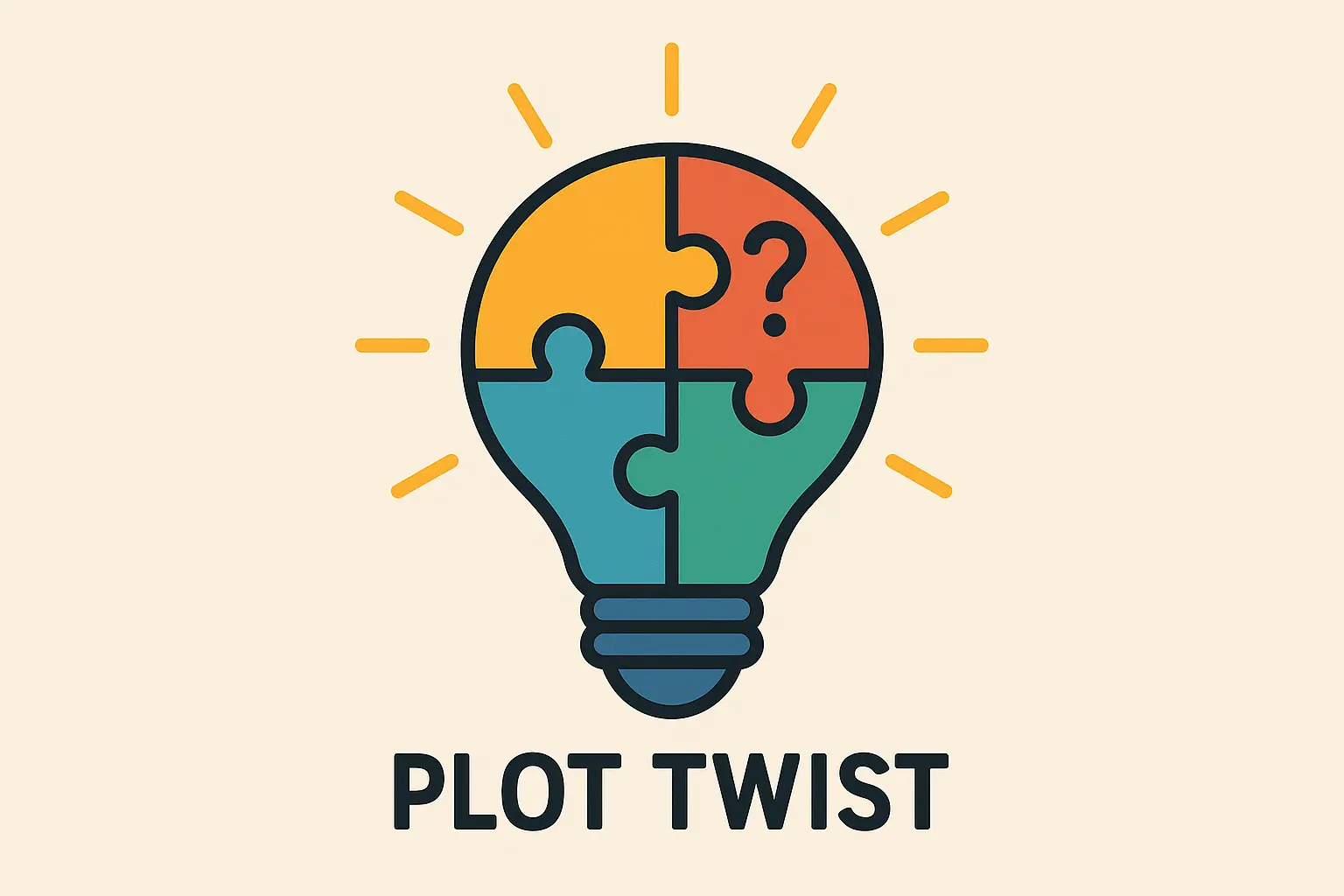
3. Experimental Structure Stories Where Format Becomes Content
Some writers get really creative with how they tell their stories. I’ve read complete love stories told through grocery receipts showing evolution from “party for one” items to “cooking for two” to “baby formula” purchases. There are thrillers revealed through smartphone notifications, showing increasing desperation through missed calls, low battery warnings, and location alerts.
These innovative approaches demonstrate how exploring different story examples can completely change your understanding of what’s possible in short formats.
These stories prove that how you tell something can be just as important as what you’re telling. The format isn’t just packaging – it’s an integral part of the narrative experience.
4. Single-Moment Expansion Stories That Freeze Time
These take one tiny moment – maybe the second before a car accident or the pause before answering a marriage proposal – and expand it through sensory detail, memory, and internal thoughts. A 500-word story might cover only the time it takes for a coffee cup to fall and shatter, but reveal an entire relationship’s history through the protagonist’s thoughts during those falling seconds.
Time becomes stretchy in these stories. External action slows to a crawl while internal experience explodes with detail and meaning.
5. Circular Narrative Flash That Transforms Meaning
These start and end with the same line, but the meaning is completely transformed by the journey between. “She always kept the door locked” might open and close a story, but by the end you understand it’s not about keeping others out – it’s about keeping memories in.
The circular structure feels satisfying and complete while the transformed meaning delivers genuine surprise. Deadtime stories with this structure feel particularly whole despite their brevity.
Classic Short Story Collections for Timeless Appeal
Classic short stories are classics for a reason – these writers figured out how to create complete emotional experiences in 10-15 minutes. They’re like comfort food for your brain, featuring masters who perfected techniques that modern deadtime stories still use today.
O. Henry’s surprise endings, Edgar Allan Poe’s atmospheric immersion, Alice Munro’s slice-of-life revelations, Ray Bradbury’s mind-bending speculation, and Flannery O’Connor’s psychological complexity provide substantial yet contained narratives perfect for longer deadtime periods.
6. O. Henry’s Surprise Endings That Redefine Irony
“The Gift of the Magi” is the perfect example of story architecture in compressed form. O. Henry could establish character relationships quickly, create conflict through circumstance rather than lengthy exposition, and resolve everything with ironic twists that reveal deeper truths about human nature.
These work perfectly for deadtime because they’re complete experiences you can absorb in 10-15 minutes while providing lasting emotional resonance. O. Henry understood that the best short stories don’t just end – they explode with meaning that keeps echoing in your head.
7. Edgar Allan Poe’s Atmospheric Tales for Complete Escapism
Poe doesn’t gradually ease you into his stories – he throws you directly into the deep end of human psychology and makes you swim. “The Tell-Tale Heart” or “The Cask of Amontillado” create complete immersive psychological worlds within minutes. Perfect when you want to completely escape whatever boring situation you’re stuck in.
The beauty of Poe’s work is its immediate intensity. You don’t slowly enter his stories – you’re yanked in completely from the first sentence.

8. Alice Munro’s Slice-of-Life Stories That Reveal Universal Truths
Munro finds extraordinary insights within ordinary moments. Her stories often focus on women at crucial life transitions, using precise psychological observation to illuminate universal human experiences. They’re perfect for readers seeking something meaningful to think about during quiet moments.
The depth found in Munro’s work exemplifies the power of short story examples that transform ordinary situations into profound literary experiences.
What makes Munro special is her ability to make the mundane feel profound. A kitchen table conversation becomes a meditation on marriage. A grocery store encounter reveals decades of hidden resentment. She makes you see the extraordinary hiding in plain sight.
9. Ray Bradbury’s Speculative Shorts for Creative Inspiration
Bradbury’s science fiction stories blend philosophical questions with accessible storytelling, perfect for getting your creative juices flowing during deadtime. His work proves that speculative fiction doesn’t need complex world-building to blow your mind – sometimes a single “what if” question is enough.
These stories plant seeds of wonder that continue growing long after you’ve finished reading. They’re particularly valuable during creative deadtime when you want inspiration rather than just entertainment.
10. Flannery O’Connor’s Southern Gothic for Psychological Complexity
O’Connor’s psychologically complex stories feature dark humor and moral questions that’ll make you think. Her characters are flawed, her situations are uncomfortable, and her insights are unforgettable.
These aren’t comfort reads – they’re challenging narratives that force you to confront difficult truths about human nature. Perfect for deadtime when you want your brain engaged rather than just passively entertained.
Contemporary Micro-Fiction for the Digital Age
Contemporary micro-fiction has evolved with technology, embracing new formats and distribution methods perfectly suited for today’s attention spans
These 2-5 minute stories include Twitter-native narratives that use platform constraints creatively, six-word memoirs suggesting complete life stories, visual-text hybrids combining images with minimal text, interactive choice-driven pieces offering reader participation, and genre-bending micro-narratives that blend multiple story elements within extremely limited word counts.
Deadtime stories have found new homes on every major social platform. Social media has become a laboratory for experimental storytelling, pushing writers to innovate within severe constraints and turn limitations into creative opportunities.
11. Twitter/Social Media Native Stories That Use Platform Constraints
These stories turn character limits into creative tools rather than annoying restrictions. A Twitter thread might tell a complete horror story across connected tweets, using the platform’s threading structure to create suspense and natural pacing breaks.
A successful Twitter story might begin: “Thread: My grandmother’s mirror shows reflections from 24 hours in the future. Today I saw myself screaming. 1/8” Each subsequent tweet reveals another piece of the mystery, using the platform’s natural breaking points to build tension and keep you clicking for more.
Instagram stories told through image sequences with minimal captions create visual narratives that unfold over time. TikTok’s video format has inspired text-based stories that mimic the platform’s quick-hit entertainment style.
12. Six-Word Memoirs and Variations That Suggest Entire Lives
Building on the “baby shoes” concept, these ultra-brief narratives suggest complete life stories through surgical word selection. “Married by Elvis, divorced by Friday” or “Never learned to swim, lived by ocean” create complete emotional experiences in minimal space.
The challenge isn’t just brevity – it’s selecting words that resonate on multiple levels and carry maximum emotional weight. Each word has to earn its place in the story.
13. Visual-Text Hybrid Stories That Combine Media
These combine carefully selected images with minimal text to create narrative experiences where neither element alone tells the complete story. A single photograph of empty swings might be paired with “Tuesday marked three weeks since the evacuation order” to create an entire post-apocalyptic narrative through implication.
The visual component does the heavy lifting, allowing the text to focus on specific emotional or narrative details that the image can’t convey alone.
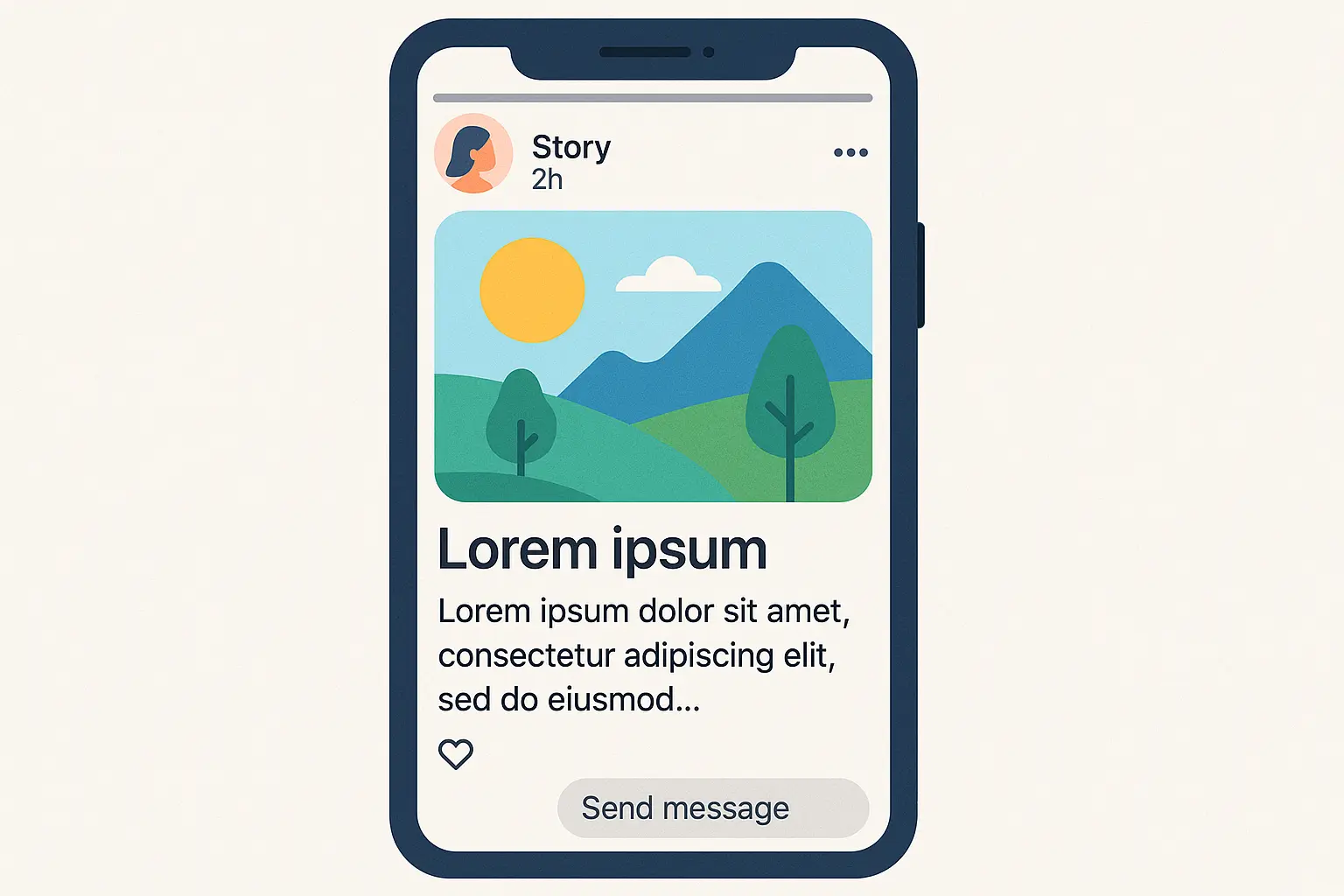
14. Interactive Choice-Driven Micro-Fiction for Active Participation
Brief interactive narratives with 3-5 decision points create multiple possible reading experiences within 5-10 minutes. Digital formats make navigation between choices seamless, transforming you from passive reader to active participant.
These work particularly well during deadtime because they require just enough mental engagement to keep you alert without overwhelming your brain when you’re already multitasking.
15. Genre-Bending Micro-Narratives That Defy Categories
Stories that combine elements from multiple genres within extremely limited word counts create unique reading experiences. A 200-word piece might blend romance, horror, and science fiction to create something entirely new and unexpected.
The brevity forces creative compression – instead of developing each genre element fully, writers must find ways to make them complement and enhance each other. Deadtime stories benefit from this genre-blending approach because it maximizes variety and surprise within minimal reading time.
Serialized Mini-Episodes That Keep You Coming Back
Serialized mini-episodes create ongoing narratives released in bite-sized chunks, perfect for establishing reading routines and building genuine anticipation. These 5-8 minute episodes include daily installment series that create consistent habits, character-following vignettes that build familiarity over time, world-building shorts that gradually reveal larger contexts, thematic anthology pieces exploring concepts from multiple angles, and seasonal or time-based series that correspond to specific periods.
Deadtime stories in serial format transform scattered moments into connected experiences. I actually started looking forward to my morning commute because I knew the next episode would be waiting for me.
16. Daily Installment Series for Consistent Reading Habits
These ongoing narratives release 200-400 word episodes daily, creating anticipation and reading habits that actually stick. Each installment provides a complete micro-experience while contributing to larger story arcs. Perfect for commuters who want consistent, brief entertainment without commitment anxiety.
The key is balancing standalone satisfaction with ongoing momentum. Each episode must feel complete while leaving you curious about what happens next. Deadtime stories work exceptionally well in this format because they match the natural rhythm of your daily routines.
17. Character-Following Vignettes That Build Investment
Connected stories following the same character through different life moments gradually build reader investment and genuine emotional attachment. Each vignette stands alone but gains additional meaning when read as part of the larger character journey.
You develop real relationships with these characters over time, making their struggles and triumphs feel personal rather than abstract.
|
Series Type |
Episode Length |
Release Schedule |
Best Deadtime Scenario |
|---|---|---|---|
|
Daily Installments |
200-400 words |
Every day |
Morning commute routine |
|
Character Vignettes |
300-600 words |
2-3 times weekly |
Lunch break consistency |
|
World-Building Shorts |
400-800 words |
Weekly |
Weekend leisure reading |
|
Thematic Anthologies |
300-500 words |
Variable |
Mood-based selection |
|
Seasonal Series |
500-1000 words |
Monthly/seasonal |
Holiday-themed reading |
18. World-Building Shorts That Reveal Larger Contexts
Brief stories set in the same fictional universe gradually reveal larger narrative contexts through accumulated details and cross-references. Each story adds another piece to the puzzle, creating rich, complex worlds through multiple perspectives and viewpoints.
This approach works particularly well for science fiction and fantasy settings where traditional world-building might overwhelm a brief story format. Deadtime stories can build entire universes one small, digestible piece at a time.
19. Thematic Anthology Pieces for Multiple Perspectives
Collections organized around central themes allow you to explore concepts from multiple angles and viewpoints. A series about “last days” might include stories about retirement, breakups, apocalypses, and final exams – all connected by theme rather than plot or character.
The thematic connection creates coherence and meaning while the varied approaches keep each individual story fresh and surprising.
20. Seasonal or Time-Based Series for Relevant Reading
Stories that correspond to specific times of year or day create relevant reading experiences that feel connected to your actual life. Halloween horror stories in October, summer romance in July, Monday morning motivation pieces – the timing enhances the story’s emotional impact.
These series create natural reading rhythms that align with your life patterns and seasonal moods. Deadtime stories feel more meaningful when they connect to your current experiences and emotional state.

Interactive and Multimedia Stories for Active Engagement
Interactive and multimedia stories transform passive reading into active participation through technology and reader involvement. These 3-12 minute experiences include choose-your-own-adventure shorts with multiple paths, audio-enhanced text stories with complementary soundscapes, augmented reality experiences blending digital storytelling with physical environments, and collaborative reader-generated content that builds community around shared narrative experiences.
Deadtime stories become way more engaging when they require your participation. I’ve discovered that interactive elements help maintain focus during particularly boring waits when my brain would otherwise wander.
21. Choose-Your-Own-Adventure Shorts for Multiple Experiences
Brief interactive narratives with multiple paths and endings create several possible reading experiences within 5-10 minutes. Digital formats make navigation between choices seamless and intuitive, allowing you to explore different outcomes quickly without getting lost.
The interactivity keeps you mentally engaged during deadtime, making these stories particularly effective for maintaining alertness during mind-numbing waits.
A typical interactive deadtime story might present: “You hear footsteps in the abandoned house. Do you: A) Investigate the sound upstairs, B) Hide in the basement, or C) Leave immediately?” Each choice leads to a 2-3 minute continuation with its own decision points, creating multiple complete story experiences from a single starting premise.
22. Audio-Enhanced Text Stories for Immersive Experiences
Stories designed to be read while listening to complementary soundscapes, music, or ambient audio that adds emotional depth and immersion without requiring additional time investment or complex setup.
These work particularly well during commutes where you can use headphones, creating a bubble of narrative immersion in crowded public spaces. Deadtime stories with audio components feel almost cinematic despite their brevity.
23. Augmented Reality Story Experiences for Environmental Integration
Narratives that use AR technology to blend digital storytelling with physical environments and real-world locations. These stories might reveal hidden narratives in familiar places or overlay fictional elements onto actual settings.
While requiring specific apps or devices, these experiences create uniquely memorable storytelling moments that traditional formats simply can’t match or replicate.
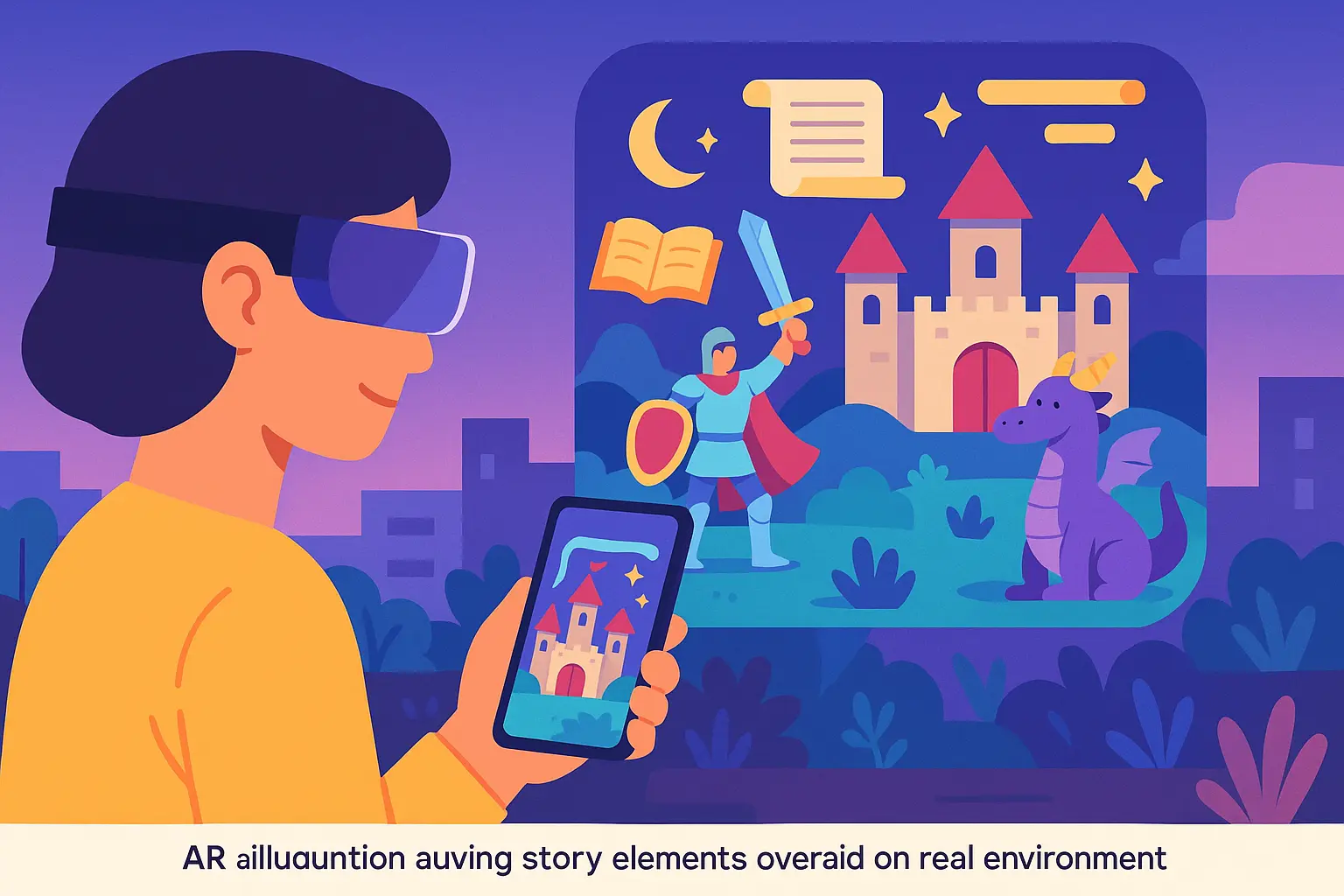
24. Collaborative Reader-Generated Content for Community Building
Stories that invite reader participation in creation, building genuine community around shared narrative experiences and creative collaboration. These might include crowd-sourced story continuations, reader-submitted character details, or collaborative world-building exercises.
The community aspect transforms individual reading into social experience, creating connections with other readers who share your interests and creative sensibilities.
Therapeutic and Mindful Narratives for Stress Relief
Therapeutic and mindful narratives are specifically designed to promote relaxation and present-moment awareness during busy, stressful days. These 5-10 minute stories focus on mindfulness-based story meditations that reduce stress and anxiety, featuring sensory experiences, natural settings, and gentle character interactions crafted to provide emotional regulation and mental restoration during deadtime periods.
Deadtime stories can serve as mini-meditation sessions when chosen thoughtfully. I’ve used calming narratives to reset my mood between stressful meetings, and they work surprisingly well for emotional regulation.
25. Mindfulness-Based Story Meditations for Present-Moment Awareness
Narratives specifically crafted to promote relaxation and present-moment awareness during hectic days. These stories often focus on sensory experiences, natural settings, or gentle character interactions designed to reduce stress and anxiety rather than increase it.
The pacing is deliberately slower, the conflicts are gentler, and the resolutions emphasize peace and acceptance rather than dramatic triumph or conflict resolution. Deadtime stories in this category prioritize emotional healing and mental restoration over pure entertainment value.

How Each Story Type Fits Your Specific Deadtime Needs
Different deadtime scenarios require different story approaches based on your available time, desired engagement level, emotional impact goals, and practical accessibility requirements. Brief deadtime (2-5 minutes) works best with micro-fiction and visual-text hybrids that provide immediate satisfaction, medium deadtime (5-10 minutes) suits flash fiction and interactive stories that offer complete experiences, while extended deadtime (10-15 minutes) accommodates classic short stories and serialized episodes with more substantial content.
Engagement levels range from high immediate engagement through twist endings and interactive elements to contemplative engagement via mindful narratives and literary fiction. Deadtime stories work best when matched precisely to your current situation, mental state, and emotional needs.
Matching Story Length to Available Time Windows
Brief deadtime (2-5 minutes) works perfectly with six-word memoirs, Twitter native stories, and visual-text hybrids that provide immediate consumption and satisfaction. Medium deadtime (5-10 minutes) suits flash fiction masterpieces, daily installment series, and interactive choice stories that offer complete narrative experiences.
Extended deadtime (10-15 minutes) accommodates classic short story collections, multiple serialized episodes, and audio-enhanced stories with more passive consumption options. Deadtime stories should never overstay their welcome in your actual schedule.
Engagement Level Considerations for Different Mental States
High immediate engagement comes from twist ending flash fiction that hooks you instantly and keeps you guessing, interactive and choice-driven stories requiring active participation and decision-making, and experimental structure stories offering novelty factor and creative surprise.
Sustained engagement develops through character-following vignettes building investment over time and emotional attachment, serialized mini-episodes creating anticipation and narrative continuity, and world-building shorts generating cumulative interest and deeper understanding.
Contemplative engagement emerges from mindfulness-based narratives promoting reflective processing and emotional regulation, literary slice-of-life stories encouraging deeper consideration of human nature, and circular narrative flash inspiring interpretive thinking and meaning-making.
Emotional Impact Goals and Story Selection
Maximum impact with minimal length comes from “baby shoes” style stories with profound implications and emotional resonance, single-moment expansion pieces providing intense focus and psychological depth, and circular narratives offering recontextualized meaning and interpretive satisfaction.
Balanced impact and length appears in classic short stories with proven emotional architecture and lasting appeal, character vignettes building accumulated emotional investment over time, and therapeutic narratives designed for specific emotional outcomes and mental health benefits.
Moderate impact with quick consumption includes social media native stories focused on entertainment and immediate gratification, visual-text hybrids providing immediate but lighter emotional impact, and interactive choice stories emphasizing engagement and participation over emotional depth.
Deadtime Scenario What Works Best Engagement Level Recommended Length Morning Commute Mystery flash fiction, Daily installments High alertness needed 5-10 minutes Lunch Break Classic shorts, Interactive stories Moderate focus available 10-15 minutes Evening Wind-down Therapeutic narratives, Slice-of-life Low, contemplative 5-12 minutes Waiting Rooms Character vignettes, Audio-enhanced Variable, flexible 3-15 minutes Coffee Breaks Micro-fiction, Visual-text hybrids Quick engagement 2-5 minutes

Transform Your Creative Inspiration with Nairrate
Reading all these deadtime stories might spark your own creative urges – and that’s where things get really interesting. Nairrate’s AI-powered story generation tools help transform deadtime story inspiration into original creative works, offering specialized support for flash fiction creation, experimental storytelling structures, character development for compressed timeframes, and genre-specific content tailored to different deadtime scenarios.
Whether you’re inspired by the compressed power of flash fiction or the engaging interactivity of choice-driven narratives, Nairrate’s Story Starters Generator can help you craft compelling opening lines that grab attention from the very first sentence.
For those interested in creating their own compact narratives, understanding powerful anecdote examples can provide the foundation for crafting memorable deadtime stories that resonate with readers and stick in their minds.
The platform understands the unique requirements of brief storytelling, generating starters that work perfectly for deadtime story formats. You can experiment with flash fiction creation to generate complete micro-narratives with maximum emotional impact, explore experimental structures and innovative storytelling approaches that break traditional rules, develop compelling characters that work effectively in compressed timeframes, and craft genre-specific content tailored to different moods and deadtime scenarios.
Writers looking to develop their skills can benefit from exploring first-person story examples that demonstrate how intimate perspectives can create powerful emotional connections in brief narratives.
The beauty of deadtime stories lies in their accessibility and immediacy – qualities that Nairrate brings to the creative process itself. Just as these stories transform idle moments into meaningful experiences, Nairrate transforms creative inspiration into polished, publishable narratives.
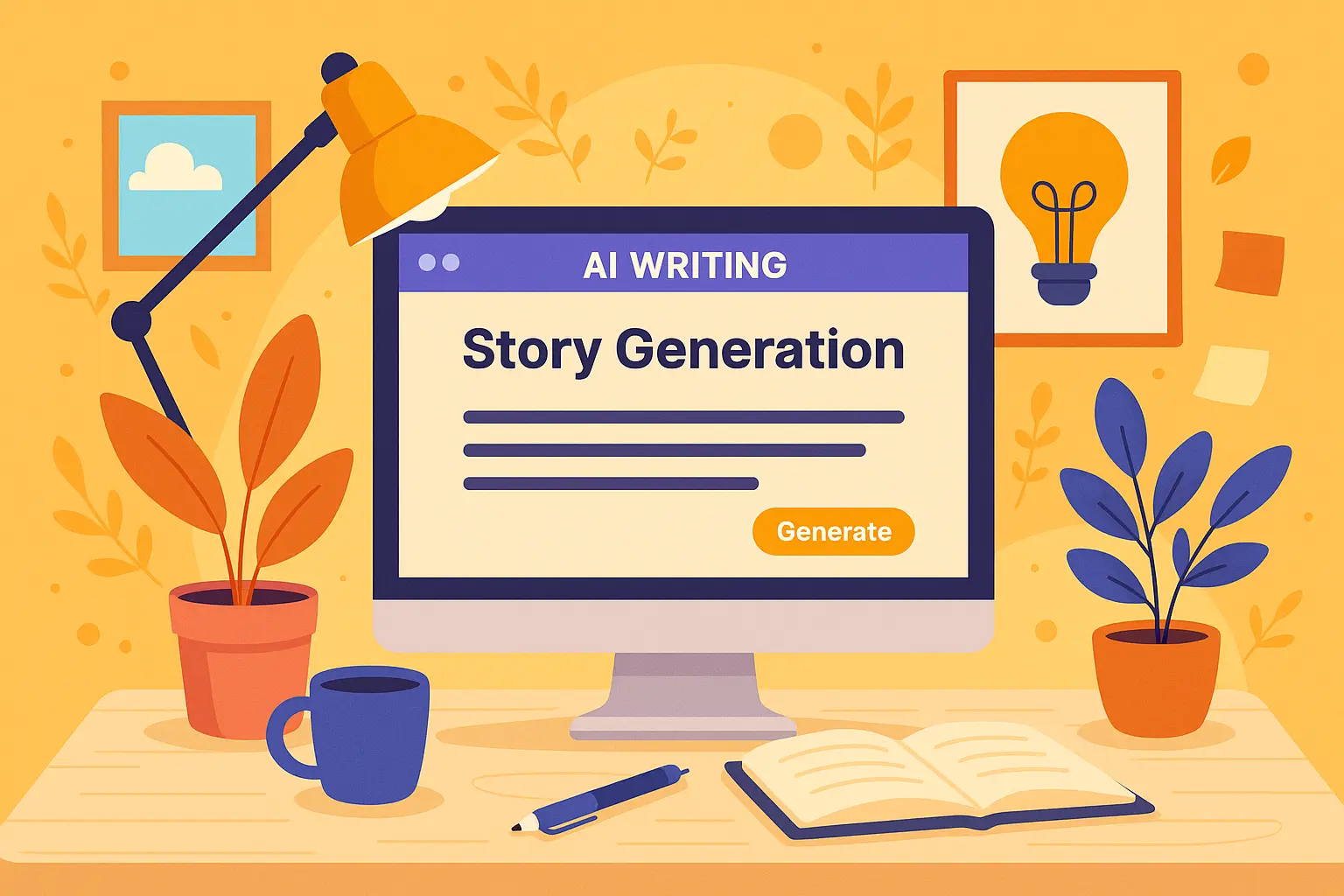
Ready to turn your deadtime story inspiration into original creations? Try Nairrate’s AI story generation tools and discover how technology can amplify your creative voice and help you craft stories that make other people’s wait times more enjoyable.
Final Thoughts
Deadtime stories represent more than just entertainment for idle moments – they’re proof that meaningful experiences don’t require massive time investments or perfect conditions. Whether you’re drawn to the compressed power of flash fiction, the familiar comfort of classic short stories, or the innovative engagement of interactive multimedia narratives, there’s a deadtime story format perfectly suited to your specific needs, circumstances, and current mood.
The key lies in matching story types to your available time, desired engagement level, and emotional goals. Your morning commute might call for energizing mystery flash fiction to keep you alert, while your evening wind-down benefits from therapeutic mindful narratives that help you decompress. Your lunch break could be perfect for serialized episodes that build anticipation for tomorrow’s installment.
Remember that the best deadtime stories don’t just fill empty minutes – they transform them into opportunities for wonder, reflection, creative inspiration, and genuine emotional connection. Every spare moment becomes a potential gateway to new worlds, fresh perspectives, and experiences that linger long after you’ve returned to your regular schedule and daily responsibilities.



Add comment